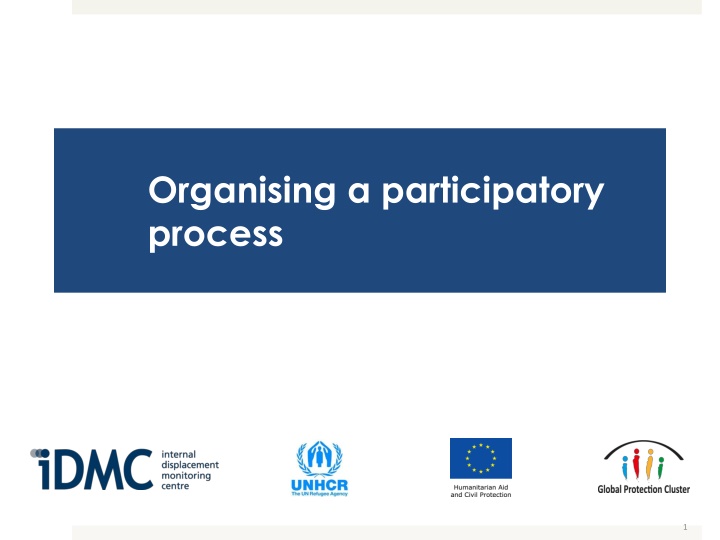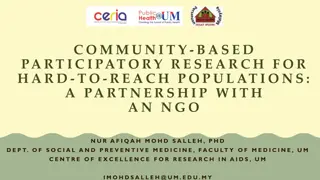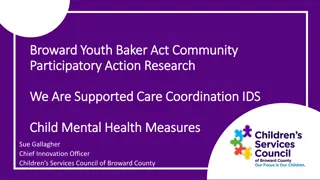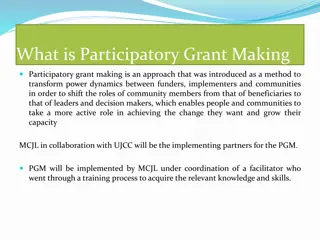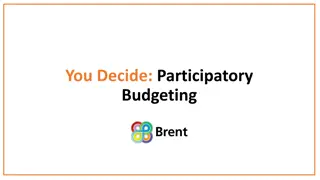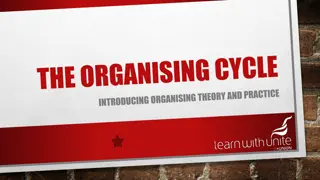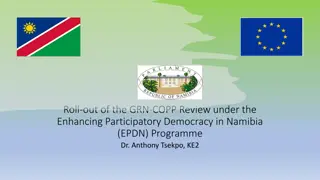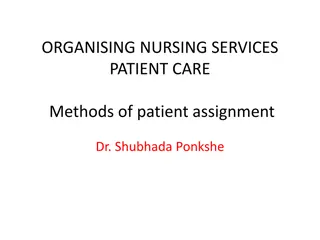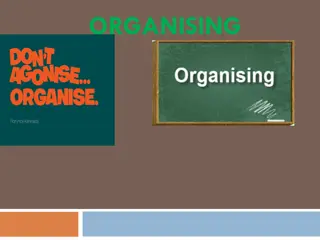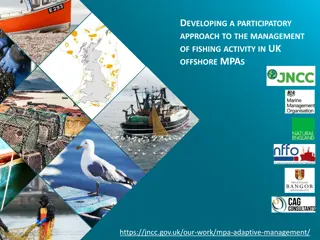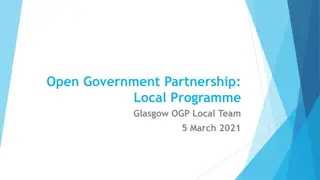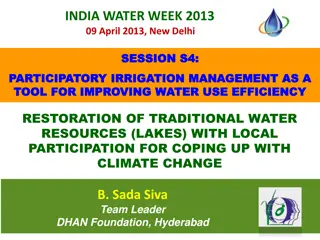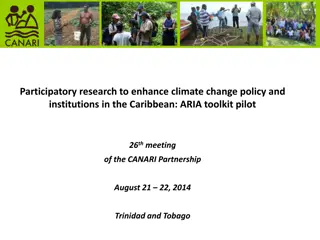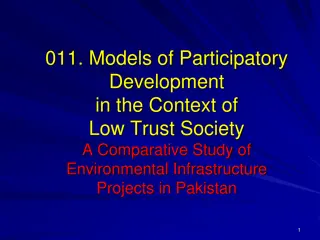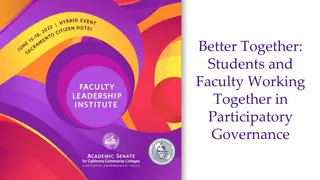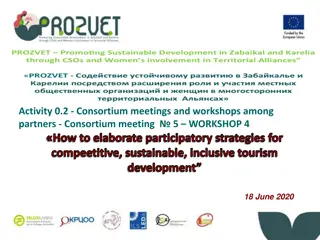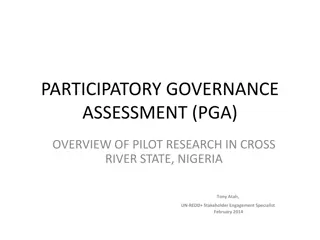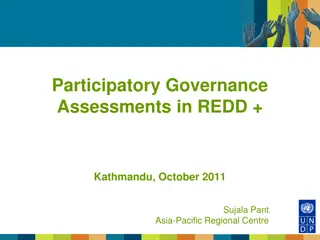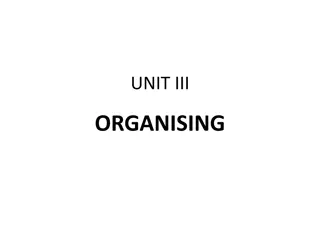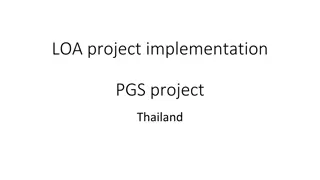Organising a Participatory Process
This content provides insights on organising an inclusive and consultative process for law or policy making, including understanding good practices, mapping stakeholders, initiating the process, keys to success, and facilitating participation of IDPs and other affected groups. It emphasizes consultation, transparency, and national ownership, along with maintaining access to political stakeholders and keeping the process technical.
Download Presentation

Please find below an Image/Link to download the presentation.
The content on the website is provided AS IS for your information and personal use only. It may not be sold, licensed, or shared on other websites without obtaining consent from the author.If you encounter any issues during the download, it is possible that the publisher has removed the file from their server.
You are allowed to download the files provided on this website for personal or commercial use, subject to the condition that they are used lawfully. All files are the property of their respective owners.
The content on the website is provided AS IS for your information and personal use only. It may not be sold, licensed, or shared on other websites without obtaining consent from the author.
E N D
Presentation Transcript
Organising a participatory process 1
Objectives To understand how to organise an inclusive and consultative law or policy- making process To learn about good practice for such processes To map the stakeholders who will be involved in the process and determine their role 2
The seven stages Consultation and participation 3
Initiating the process How should the process start? 1. Make an official decision to develop and adopt an instrument - Government: sovereign act - CSOs, international organisations, special rapporteur: advocacy 2. Communicate the decision to stakeholders, including IDPs and others affected by displacement 4
Good process = good document Consultation Participation Transparency Information National ownership Broad buy-in Depoliticised 5
Keys to a successful process Maintain access to political stakeholders Keep the process technical 6
Consultation table National, provincial and district authorities African Union Parliament IDPs and other groups affected by displacement Donors National policy on IDPs AU and UN special rapporteur on IDPs human rights National civil society UN, ICRC, international civil society National Red Cross Society National research institutions National human rights commission 7
Participation of IDPs and others affected by displacement Participatory tools: Information, communication and empowerment IDPs representatives and organisations Promotion of gender equality and participation Focus group discussions Participatory assesment Complaint mechanisms Surveys Different IDPs in terms of age, gender and diversity NGOs, religious and traditional instutitions can represent IDPs Host communities and other affected people are included 8
Stakeholder mapping International organisations People affected by displacement Regional organisations Donors Local government Government agency Stakeholders Other government bodies Regional institutions CSOs National human rights institutions IDPs 9
Get the process right B Y D F Lead agency A X Z E C 10
Whos who? Steering/drafting committee Consultation partners Lead agency 11
Getting to work AU dialogue for action Action plan for the domestication and implementation of the Kampala Convention in Uganda Yemen Regional consultative workshops for stakeholders on the development of a national policy to adress and resolve displacement 12
